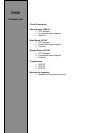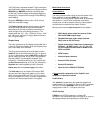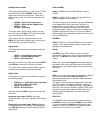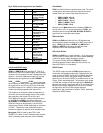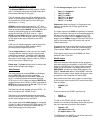Display Board interface
The display board interface is on the 16 way FFC flexi
foil connector at location
CON202
. Power for the
display also travels on the connector. There are 4 –
wires to interface with the VFD driver chip these are
seen as.
o
XFPDIN - Data to the display board
o FPDOUT - Data from the display board
o XFPCLK - Clock
o XFPSEL - Chip select
The above control lines are level shifted to 5v logic
from 3.3v levels by
IC200
(74HCT125) these are the
levels required by the VFD drive chip.
The IR output from the Display board arrives as
IRRCV
this is an open collector signal, which can be
wire-Ord with the re-panel remote input.
Digital Audio
The Digital audio leaves the chip 3 sets of data lines
labelled as.
o ADAT0 - Left and Right channel data
o ADAT1 - Left and Right surround
o
ADAT2 - Centre and Sub
Along with the ADAT line we will also see the
ABCLK
and
ALRCK
as required for IS2 data conversion.
The Vaddis V also supplies a direct SPDIF output for
interfacing with ancillary processing equipment.
Digital Video
The Digital Video output from the Vaddis V consists of
the following signals:
o VIDPO to 19 - 20 Bit wide digital video data
o CLK_27M - 27 Mhz Video clock
o VSYNC - Vertical sync
o
HSYNC - Horizontal Sync
The 20 bit wide bus
VIDP0
to
19
provides video data
as follows.
Interlaced video mode: VIDP0 to 7 provide
multiplexed 8 bit Y, Cb and Cr data with VIDPO being
the Isb.
Progressive scan video mode: VIDP0 to 9 provide
10 bit multiplexed Cb, Cr data with VIDP0 being the
Isb.
VIDP10 to 19
provide 10 bit Y data with VIDP10
being the Isb.
Flash/ SDRAM
IC203
is a 64Mbit (32 bit x 2Meg) SDRAM. It runs at
135MHz
IC205 is a 16Mbit (16 bit x 1Meg) intel type flash IC for
program storage (Player software).
The flash interfaces to the Vaddis V using the SDRAM bus
it may appear that the bus connects to the flash in a
random manner, however this is simply because the
Vaddis bus is multiplexed that way. The Flash will be
accessed at power up and the contents are copied to the
SDRAM the program will then be run from the SDRAM.
Series resistors are employed to isolate the flash bus from
the main SDRAM bus.
EEPROM
IC204
is a 8kBit (1K x 8) Serial EEPROM. This is used for
storage of non-volatile storage of player settings, region
settings and bookmark data.
Clocks
CLK27MV is the 27Mhz clock for video. It is used to
generate the 135Mhz clock for the Vaddis microprocessor
and DSP. The
MCLKV
is the audio master clock for the
Vaddis.
We run the Vaddis in
PLL bypass
mode and generate or
own master clock (see main clock section of manual) for
higher accuracy and improved performance across Audio
and Video.
RESET
IC201 is a reset generator chip that monitors the +3.3V rail
and ensures a reset signal
PWR_ON_RESET*
is
generated on power up, or if the mains power dips below
an operational level.
This signal is used to reset the Vaddis V and Flash micro
only. The Vaddis V line labelled as RESET* resets the
remaining circuitry of the player apart from the HDMI chip,
this has it’s own reset line labelled as HDMI_RESET this is
necessary if we require to reset the HDMI chip only (for
example when the HDMI sink is connected and then
disconnected).
Serial Port
The VADDIS V can interface with the external world via
the
RS232
connector at location
CON900
and the RS232
Transceiver at location IC900, the serial data lines are
shown as SERIAL RX and SERIAL TX these lines allow
for direct control over the unit via RS232.




